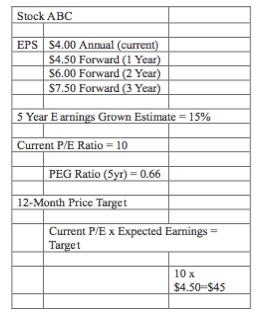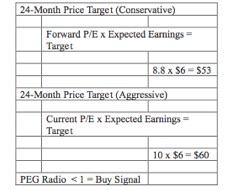From Chapter 3 – The Disciplined Investor (pre-order now)
Price Targets
Possibly the most overlooked aspect of fundamental analysis is the setting of appropriate price targets for both purchases and sales. As a disciplined investor, you can appreciate the importance of guidelines inside your investment plan to reduce risk. This will help your portfolio, as well as your emotions, to have less fluctuation(s).
Obviously, the first element in developing an appropriate price target is to gather information on the company in question. You need to understand what its forward-looking strategy is, as well as the overall economic environment in which it operates. Take as an example a company in the semiconductor industry.
It is a good idea for the owner of the company to understand the competition. Since you are planning on owning a piece of the company, here are a few sample questions you may want to think about:
Ӣ Who is the competition?
Ӣ Who are the suppliers, and who are the buyers?
Ӣ What effect do domestic and international economic events have on their products?
Ӣ Will a weakening currency cause a change in the demand for their products?
Ӣ Will they purchase supplies from international vendors that can be affected by the
dollar or any other cross-currency exchange issues?
Ӣ Do their competitors have similar pricing structures?
Ӣ Is the product-set outdated?
Ӣ What costs are associated with new research and development?
Ӣ Is there any concentration risk?
Ӣ Are they reliant on one supplier or buyer?
Ӣ Is there a particular industry, region or country that is important to the company?
Ӣ If a competitor drops the price on a main product, does the action affect the companies in question?
Ӣ Will they continue to have earnings momentum similar to their historical periods?
Ӣ Is their inventory up to date?
Ӣ Is management geared to distribute at the levels necessary?
Most of these questions can only be answered through significant amounts of research. But do not panic! Services such as Thompson First Call, Zacks, Standard & Poor‘s and other vendors through individual brokerage houses are willing to do this for you.
Actually, employing a service is a great way for you to receive earnings estimates for a company. It helps to streamline the process and give quality estimates of forward earnings from professionals that are studying these daily. Of course you could purchase subscriptions directly from these companies, but the costs are quite prohibitive for the average investor. A better idea would be to register with either MSN Money or Quicken.com. Both of these sites provide adequate earnings data””for free.
Once you have these tools in hand, you can begin the forecasting process by combining the range of estimates given with the answers you have gathered to the questions about the company.
So, if you have a range of analysts‘ estimates for Bank of America that fall between $0.30 and $0.42, you can use your understanding of the markets to choose the number you feel most comfortable with. If you are not confident just yet, use the average from all of the analysts‘ predictions. Then a formula that includes the earnings and projected growth rate can be used with any spreadsheet program. The result will provide you with a 12-month price target to use for both the purchase and the eventual sale of a security.
Price Target Example(s):

It should be obvious from this chapter that researching a company is no easy task. With so many different constructs and metrics at the disposal of the average investor, it is not surprising that many people are fearful of making a severe mistake. With so much to analyze, there is so much room for failure or misinterpretation…
The Disciplined Investor is coming to bookstores everywhere soon. Pre-order now with no obligation. Just send us a note that you are interested and every preorder shipped will be personally signed by Andrew.
















